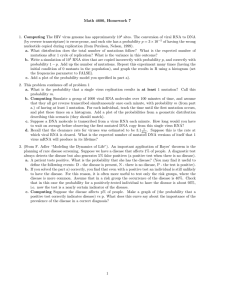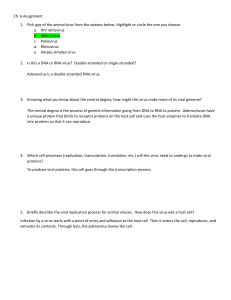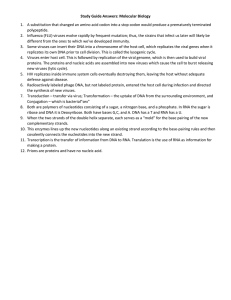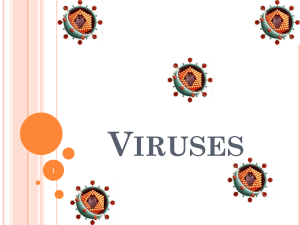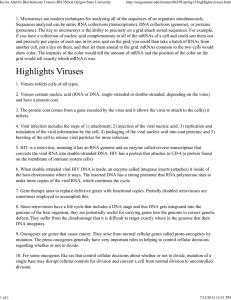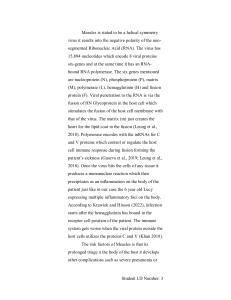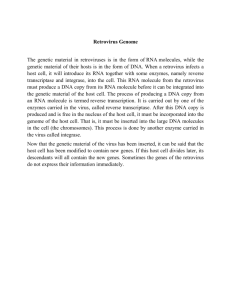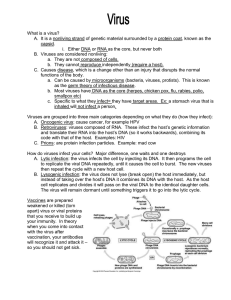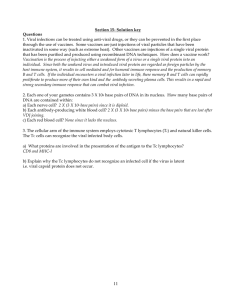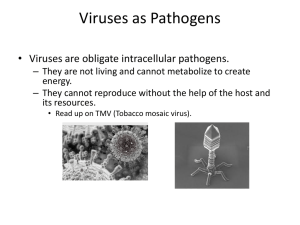Virus discovery cDNA-AFLP (VIDISCA) is a virus identification
advertisement
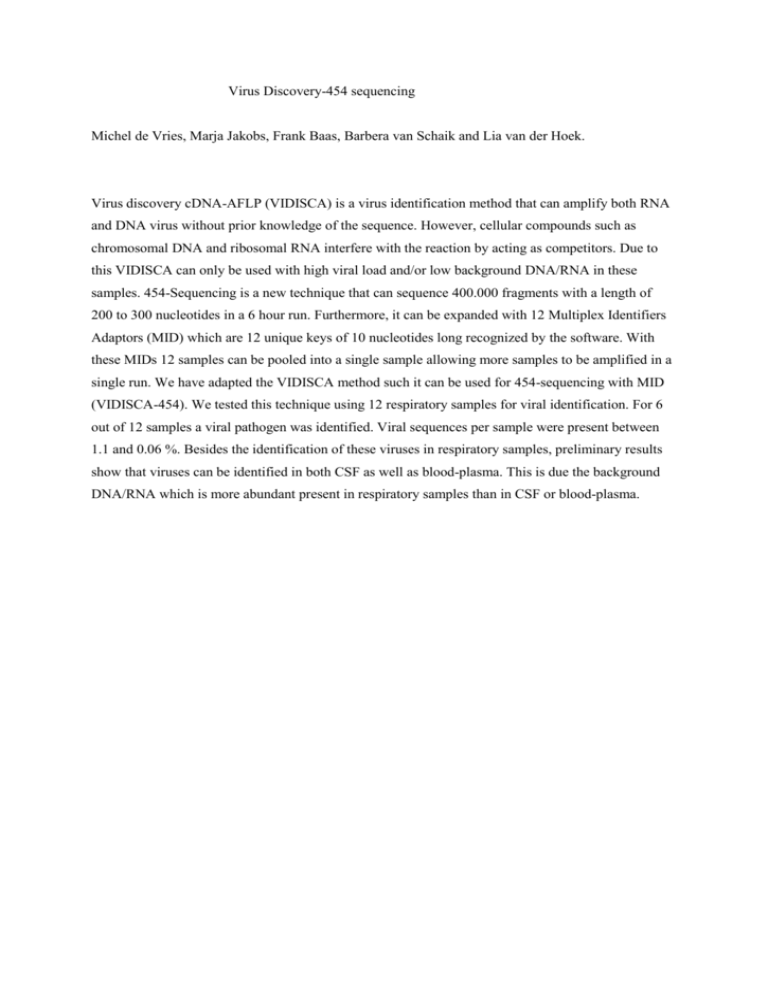
Virus Discovery-454 sequencing Michel de Vries, Marja Jakobs, Frank Baas, Barbera van Schaik and Lia van der Hoek. Virus discovery cDNA-AFLP (VIDISCA) is a virus identification method that can amplify both RNA and DNA virus without prior knowledge of the sequence. However, cellular compounds such as chromosomal DNA and ribosomal RNA interfere with the reaction by acting as competitors. Due to this VIDISCA can only be used with high viral load and/or low background DNA/RNA in these samples. 454-Sequencing is a new technique that can sequence 400.000 fragments with a length of 200 to 300 nucleotides in a 6 hour run. Furthermore, it can be expanded with 12 Multiplex Identifiers Adaptors (MID) which are 12 unique keys of 10 nucleotides long recognized by the software. With these MIDs 12 samples can be pooled into a single sample allowing more samples to be amplified in a single run. We have adapted the VIDISCA method such it can be used for 454-sequencing with MID (VIDISCA-454). We tested this technique using 12 respiratory samples for viral identification. For 6 out of 12 samples a viral pathogen was identified. Viral sequences per sample were present between 1.1 and 0.06 %. Besides the identification of these viruses in respiratory samples, preliminary results show that viruses can be identified in both CSF as well as blood-plasma. This is due the background DNA/RNA which is more abundant present in respiratory samples than in CSF or blood-plasma.

